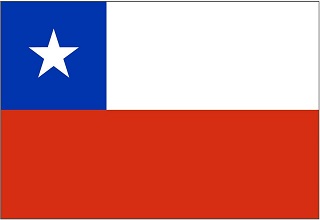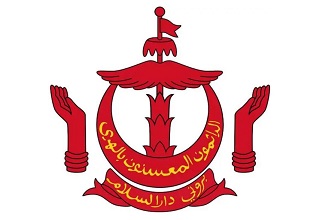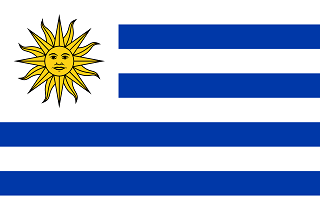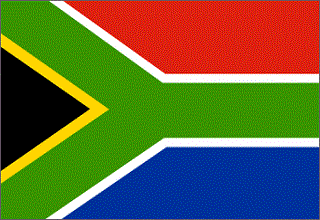Announcement on imported Cambodian fresh coconut plant quarantine requirements
1. Inspection and quarantine basis
(1) "The Law of the People's Republic of China";
(2) The "Law of the People's Republic of China in and out of the country" and the implementation regulations;
(3) "Food Safety Law of the People's Republic of China" and implementation regulations;
(4) "Measures for the Supervision and Supervision and Supervision and Quarantine of Entry Fruits";
(5) The General Administration of Customs of the People's Republic of China and the Division of the Ministry of Agriculture and Forestry and Fishery of the Kingdom of Cambodia on Cambodia's Fresh Coconut Eat Coconut Endogenic Plant Quarantine Requirements ".
2. Allow the name of entering the country
Fresh coconut (hereinafter referred to as coconut), scientific name COCOS NUCIFERA, English name Coconut.
Third, the place where allowed
Cambodian coconut production area.
Fourth, the approved orchard and packaging factory
The Loan Orchard and Packaging Factory must be reviewed and filed at the Kingdom and Forestry and Fisheries Department of Cambodia (hereinafter referred to as Cambodia), and approved by the General Administration of Customs of the People's Republic of China (hereinafter referred to as China). The registration information should include the name, address and registration number so that the exported goods can accurately trace the source when not in compliance with the relevant regulations. Before the annual export season, the Cambodian side should provide the Chinese side with a registration list. After the Chinese side is approved and approved, China will announce it on the website of the General Administration of Customs.
5. The list of quarantine and harmful biological lists that China pays attention to
1. Coconut heart leaf armor brontispa longissima
2. CopTotermers Curvignathus
3. Lili Dysmicoccus Lepelleyi
4. New pineapple gray powder Dysmicoccus neobrevipes
5. Nanyang hip lines Planococcus lilacinus
6. Indian Raoiella Indica
6. Before export management
(1) Orchard management.
1. The orchards should establish a sound quality management system and traceability system under the supervision of Cambodia, and implement a good agricultural operation specification (GAP) to maintain the hygiene conditions of the orchard, such as the pollution source of fruit production around the surrounding And implement harmful biological comprehensive treatment (IPM), including regularly carrying out harmful biological monitoring surveys, physics, chemistry or biological prevention and control measures, as well as agricultural operations and other prevention and control measures to avoid or minimize reduction Essence
2. Cambodia shall organize and implement orchard monitoring in accordance with the requirements of international plant quarantine measures No. 6 (ISPM 6), and organize and implement orchard monitoring. In order to monitor and prevent pests, in addition to visual inspections, physical and chemical prevention methods should be used in the orchard.
3. The monitoring and prevention of harmful creatures shall be implemented under the guidance of professional and technical personnel. Technicians should receive training from Cambodia or their authorized agencies.
4. For harmful creatures such as Lili Billy gray powder, new pineapple ash pink, Nanyang hip noodles, Indian thunderbone mites, coconut heart leaf armor and other harmful creatures, orchard monitoring should be performed. From the flowering period to the harvest period, it is monitored at least every 15 days to check whether the fruit, stems, and leaves have the above -mentioned harmful creatures. If harmful creatures or corresponding symptoms are found in monitoring, the Cambodian side should adopt comprehensive management measures including chemistry, physical or biological control to ensure that Chinese coconuts do not bring Chinese harmful creatures without Chinese concern.
5. Cambodia should retain the records and prevention records of harmful biology in the orchard, and provide the Chinese side when needed. The prevention records should include information such as chemical pharmaceuticals, effective ingredients, dosage and time such as the growth season.
6. The comprehensive management measures for the Chinese -based quarantine -harmful creatures must be approved by the Cambodian side and should be provided by the Cambodian direction before the trade starts.
(2) Packaging plant management.
1. The process of transmission, packaging, storage, and transportation of transition coconuts shall be carried out under the supervision of quarantine supervision of Cambodia or its authorized officials.
2. The packaging factory of losing coconuts should be neat and hygienic, the ground needs to be hardened, and there are raw materials and finished databases; the functional areas of coconut processing, processing, storage, etc. should be relatively independent and reasonable. distance.
3. During the packaging process of losing Chinese coconuts, it should be manually selected, classified and clean, and eliminates diseases, insects and fruits, rotten fruits, malformed fruits, branches and leaves, fruits, sepals, or other plant residues and soil.
4. If the packaged coconut is stored, it should be stored immediately and stored separately to avoid being infected by harmful creatures.
5. The traceability system should be established to ensure that the transition coconut can be traced back to the registered orchard, recording the processing packaging date, source orchard name or its registration number, quantity, export date, export quantity, export to national, container numbers and other information.
(3) Packaging requirements.
1. The packaging materials should be clean and unused, which meets China's relevant plant quarantine and hygiene requirements. If the wooden packaging is used, it must meet the requirements of the international plant quarantine measures No. 15 (ISPM 15).
2. Each packaging box must be marked with the name, variety, export country, origin, Orchard name or its registered number, or its registration number on each box. Each packaging box and a tray must be marked with Chinese or English "to the People's Republic of China" or "Exported to the People’ s Republic of China ".
3. The container that is transported and transported to China Coconut must check whether it has good hygiene conditions during the box. The container should be applied to the seal, and the sealing should be intact when the arrival of the Chinese port.
(4) Inspection and quarantine before export.
1. Before the exit, the Cambodian side should perform sampling inspections on each batch of Chinese coconuts at a ratio of 2%. If there is no plant quarantine problem in two years, the sample ratio drops to 1%.
2. If you find the leaf, fruit handles, sepals, soils, or the quarantine harmful creatures that are concerned about China, the entire batch of goods shall not be exported to China, and the related orchards and packaging factories will be suspended as the situation of the export season. Cambodia should find out the reasons and take improvement measures. At the same time, the Cambodian side should save the search records and should be provided to the Chinese side.
(5) Plant quarantine certificate requirements.
For coconuts that have been qualified, Cambodia should issue a plant quarantine certificate in accordance with the international plant quarantine measures No. 12 (ISPM 12), indicate the name or registration number of the orchard and packaging factory, and fill in the following additional statements: Specified in the Protocol of Phytosanitary Requirements for Export of Fresh Coconut FRUITS FROM Cambodia to China, and is free from Quarantine Pests of Concess to China . "(This batch of goods meets the requirements of Cambodia fresh coconut transit Chinese plant quarantine linked, without Chinese attention Quarantine is harmful creatures.)
7. Entry inspection and quarantine and unqualified treatment
When Loan Coconut arrived at the port of China, the Chinese Customs will check the relevant documents and logos of nuclear inspection, and implement inspection and quarantine in accordance with the following requirements.
(1) Certificate and logo verification.
1. Check whether the imported coconut obtains the "Entry Animal and Plant Quarantine License".
2. Check whether the plant quarantine certificate meets the provisions of Article 6 (5) of this announcement.
3. Check whether the identification on the packaging box and the tray meets the provisions of Article 6 (3) of this announcement.
(2) Entry inspection and quarantine.
1. Loan coconuts should enter the port of imported fruit from China.
2. According to relevant laws, administrative regulations, rules, etc., the import and quarantine of the imported coconuts shall be implemented, and those who pass the inspection and quarantine shall be allowed to enter the country.
(3) Unqualified processing.
1. If it is found that the orchard and packaging factories that are not registered by the Chinese side are found, the batch of goods are not allowed to enter the country.
2. If the quarantine -harmful creature that is concerned about China or other new quarantine biological lives in Cambodia, or find fruit handles, sepals, soil, plant residues, etc. If it is returned or destroyed.
3. If it is found that it does not meet the national standard of food safety, the batch of goods will be returned or destroyed.
4. If the above -mentioned unqualified situation is found, China will notify the Cambodian side; when the quarantine is unqualified by the losing Huahua coconut, the Chinese side suspends the import of coconuts in the export season related orchards and packaging factories as depending on the situation. Cambodia should find out the reasons and urge relevant orchards and packaging factories to rectify until the relevant rectification measures are effectively implemented and recognized by China.
Special announcement.
GACC
September 18, 2023




